-
 Bitcoin
Bitcoin $104,092.7082
-3.90% -
 Ethereum
Ethereum $2,500.1510
-9.45% -
 Tether USDt
Tether USDt $1.0003
0.02% -
 XRP
XRP $2.1161
-5.92% -
 BNB
BNB $644.7652
-3.34% -
 Solana
Solana $143.3632
-10.62% -
 USDC
USDC $0.9995
-0.03% -
 Dogecoin
Dogecoin $0.1728
-9.80% -
 TRON
TRON $0.2700
-2.70% -
 Cardano
Cardano $0.6282
-9.47% -
 Hyperliquid
Hyperliquid $38.5896
-7.04% -
 Sui
Sui $2.9976
-10.50% -
 Chainlink
Chainlink $13.0865
-10.97% -
 UNUS SED LEO
UNUS SED LEO $8.8697
1.35% -
 Stellar
Stellar $0.2563
-7.44% -
 Bitcoin Cash
Bitcoin Cash $401.8213
-6.21% -
 Avalanche
Avalanche $18.8844
-11.63% -
 Toncoin
Toncoin $2.9457
-8.46% -
 Shiba Inu
Shiba Inu $0.0...01163
-9.64% -
 Hedera
Hedera $0.1538
-10.65% -
 Litecoin
Litecoin $82.4785
-9.46% -
 Polkadot
Polkadot $3.7430
-9.96% -
 Ethena USDe
Ethena USDe $1.0004
-0.01% -
 Monero
Monero $306.8529
-6.55% -
 Dai
Dai $0.9998
0.01% -
 Bitget Token
Bitget Token $4.4842
-5.28% -
 Pepe
Pepe $0.0...01069
-13.19% -
 Uniswap
Uniswap $7.0207
-13.47% -
 Pi
Pi $0.5498
-13.03% -
 Aave
Aave $268.2967
-9.88%
KDJ low-level golden cross: How to avoid false signals?
The KDJ low-level golden cross can signal bullish reversals in crypto, but false signals are common due to volatility, whale manipulation, and low volume.
Jun 12, 2025 at 08:21 am
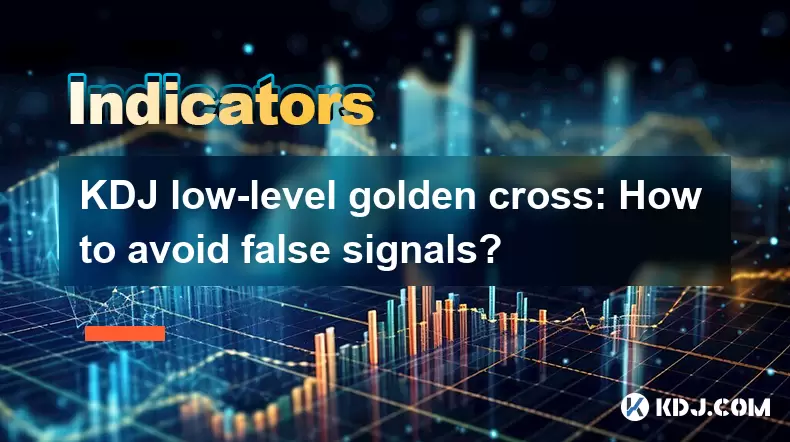
Understanding the KDJ Indicator
The KDJ indicator, also known as the stochastic oscillator, is a momentum-based technical analysis tool widely used in cryptocurrency trading. It consists of three lines: the %K line (fast stochastic), the %D line (slow stochastic), and the %J line (divergence value). These lines oscillate between 0 and 100, helping traders identify overbought or oversold conditions.
In the context of crypto markets, which are highly volatile and often influenced by news events and macroeconomic factors, the KDJ low-level golden cross occurs when the %K line crosses above the %D line at a level below 20, signaling an oversold condition. This is typically interpreted as a bullish reversal signal. However, due to the erratic nature of digital assets, such signals can be misleading if not properly validated.
What Causes False Signals in KDJ Low-Level Golden Cross?
False signals in the KDJ low-level golden cross arise from several market dynamics unique to cryptocurrencies:
- Market Volatility: Cryptocurrency prices can swing dramatically within short timeframes, causing rapid movements in the stochastic lines that may appear like valid signals but quickly reverse.
- Whale Manipulation: Large holders (whales) can manipulate price action to trigger false breakouts and breakdowns, confusing retail traders.
- Low Trading Volume: In illiquid markets, small trades can create misleading candlestick patterns and indicator readings.
- Timeframe Mismatch: Using KDJ on smaller timeframes without confirmation from higher timeframes can result in premature entries.
These conditions contribute to the generation of false KDJ low-level golden cross scenarios where the price doesn’t follow through with a genuine uptrend after the signal appears.
How to Confirm the Validity of a KDJ Low-Level Golden Cross
To reduce the risk of acting on false signals, traders should incorporate additional validation methods:
- Volume Confirmation: A valid KDJ low-level golden cross should coincide with a noticeable increase in trading volume. Rising volume indicates stronger buyer interest and improves the probability of a successful trade.
- Price Action Validation: Look for strong candlestick patterns such as bullish engulfing, hammer, or inverted hammer formations that align with the KDJ crossover.
- Support Level Proximity: If the crossover occurs near a key support zone or a previous swing low, it adds credibility to the signal.
- Divergence Check: Use other indicators like RSI or MACD to check for bullish divergence, reinforcing the potential for a trend reversal.
By combining these tools with the KDJ low-level golden cross, traders can filter out noise and focus on high-probability setups.
Using Multiple Timeframe Analysis to Filter False Signals
One effective strategy to avoid false KDJ signals is to apply multiple timeframe analysis:
- Identify Trend on Higher Timeframes: Before acting on a KDJ signal on a lower timeframe (e.g., 15-minute chart), confirm the trend using a higher timeframe (e.g., 1-hour or 4-hour chart).
- Look for Confluence Across Timeframes: A KDJ low-level golden cross appearing simultaneously on both the 1-hour and 4-hour charts increases its reliability.
- Avoid Trading Against the Trend: If the higher timeframe shows a strong downtrend, even a low-level golden cross might be part of a retracement rather than a full reversal.
This approach helps traders distinguish between genuine reversals and temporary bounces, especially important in fast-moving crypto markets.
Implementing Risk Management Around KDJ Signals
Even with confirmed KDJ low-level golden cross setups, proper risk management is essential:
- Set Tight Stop Losses: Place stop losses just below the recent swing low or the point where the KDJ crossover occurred. This limits exposure if the signal fails.
- Use Trailing Stops: Once the trade moves in your favor, trail the stop loss to lock in profits and minimize losses if the price reverses.
- Position Sizing: Adjust position size based on account risk parameters. Never risk more than 1–2% of your capital on a single trade.
- Monitor Exit Points: Consider exiting partially when the %K line approaches overbought territory (above 80), as this could indicate exhaustion in the move.
Properly managing trades around the KDJ low-level golden cross ensures long-term survival in the unpredictable world of cryptocurrency trading.
Frequently Asked Questions
Q: Can I use KDJ alone for trading decisions in crypto markets?
A: While the KDJ indicator provides valuable insights into momentum and overbought/oversold levels, relying solely on it can lead to false signals. It’s best used in conjunction with other tools like volume analysis, moving averages, and price action patterns.
Q: What timeframes work best for identifying reliable KDJ low-level golden crosses?
A: Medium timeframes like the 1-hour and 4-hour charts tend to offer more reliable signals compared to shorter intervals. However, always validate with higher timeframe trends before entering a trade.
Q: How do I differentiate between a real KDJ low-level golden cross and a fake one?
A: A real signal usually coincides with rising volume, occurs near a strong support level, and aligns with bullish candlestick patterns. Fake signals often lack these confirming factors and may reverse shortly after forming.
Q: Should I ignore all KDJ signals during strong trending phases in crypto?
A: During strong trends, countertrend KDJ signals like the low-level golden cross can be risky. It's advisable to take such signals only in the direction of the trend or wait for pullbacks confirmed by other indicators.
Disclaimer:info@kdj.com
The information provided is not trading advice. kdj.com does not assume any responsibility for any investments made based on the information provided in this article. Cryptocurrencies are highly volatile and it is highly recommended that you invest with caution after thorough research!
If you believe that the content used on this website infringes your copyright, please contact us immediately (info@kdj.com) and we will delete it promptly.
- HashFly, a Pioneering Force in the Cloud Mining Industry, Solidifies Its Position as the Most Trusted Platform of 2025
- 2025-06-13 11:00:25
- Nimanode Raises Over 15% of its Soft Cap in Token Presale
- 2025-06-13 11:00:25
- US President Donald Trump released a prerecorded message for attendees of Coinbase's State of Crypto Summit as Congress considers legislation to regulate payment stablecoins and establish a digital asset market structure framework.
- 2025-06-13 10:55:12
- Xpfinance (XPF) Token Presale Surpasses 40% of Its Soft Cap Allocation
- 2025-06-13 10:55:12
- Official Trump (TRUMP) Is Closing in on VeChain (VET) in Market Cap – and Fast
- 2025-06-13 10:50:11
- The race for the next big crypto coin is on. SUI is flashing bullish signals with a possible 2x breakout.
- 2025-06-13 10:50:11
Related knowledge
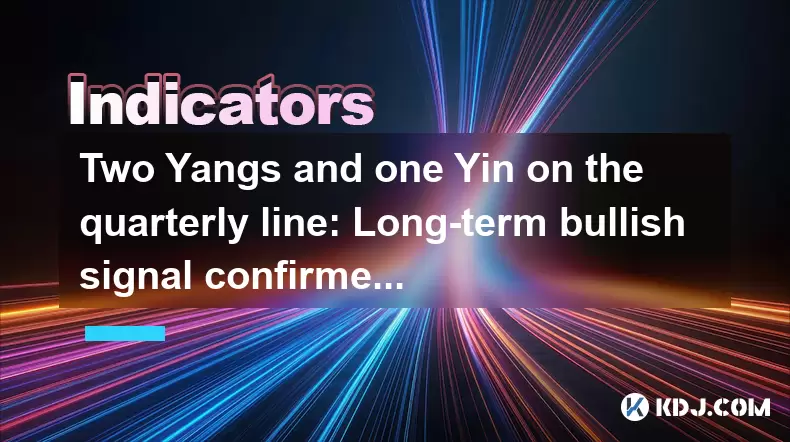
Two Yangs and one Yin on the quarterly line: Long-term bullish signal confirmed?
Jun 12,2025 at 07:00am
Understanding the 'Two Yangs and One Yin' Candlestick PatternIn technical analysis, candlestick patterns play a pivotal role in identifying potential market reversals or continuations. The 'Two Yangs and One Yin' pattern is one such formation that traders often observe on longer timeframes like the quarterly chart. This pattern consists of two bullish (...
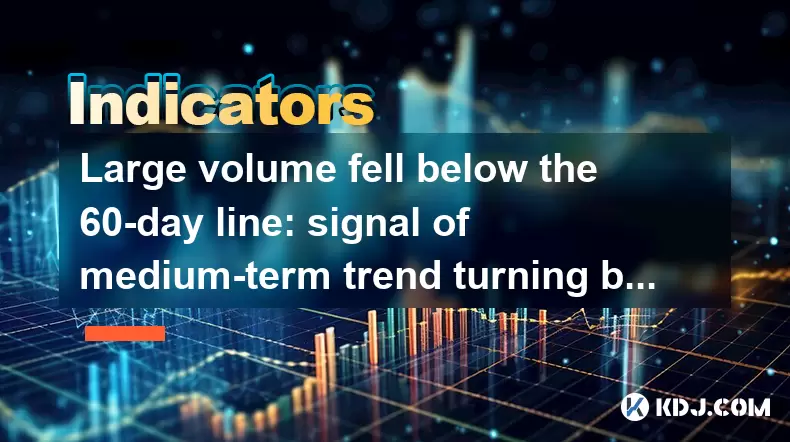
Large volume fell below the 60-day line: signal of medium-term trend turning bearish?
Jun 13,2025 at 03:42am
Understanding the 60-Day Moving Average in CryptocurrencyIn cryptocurrency trading, technical analysis plays a crucial role in predicting price movements. One of the most commonly used indicators is the 60-day moving average (MA), which smooths out price data over the last 60 days to provide traders with insights into the medium-term trend. When large v...
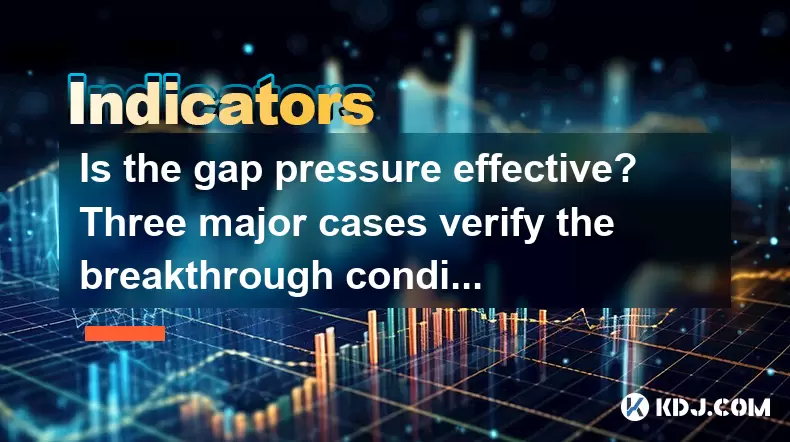
Is the gap pressure effective? Three major cases verify the breakthrough conditions
Jun 13,2025 at 04:35am
Understanding the Gap Pressure in Cryptocurrency TradingIn cryptocurrency trading, gap pressure refers to a technical analysis concept where price gaps form due to sudden market movements. These gaps often occur between the closing price of one trading session and the opening price of the next. Traders pay close attention to these gaps because they can ...

KDJ low-level golden cross: How to avoid false signals?
Jun 12,2025 at 08:21am
Understanding the KDJ IndicatorThe KDJ indicator, also known as the stochastic oscillator, is a momentum-based technical analysis tool widely used in cryptocurrency trading. It consists of three lines: the %K line (fast stochastic), the %D line (slow stochastic), and the %J line (divergence value). These lines oscillate between 0 and 100, helping trader...

Bottom-up volume stagnation: Is it accumulation or heavy selling pressure?
Jun 12,2025 at 01:42pm
What Is Bottom-Up Volume Stagnation?Bottom-up volume stagnation refers to a specific pattern observed in cryptocurrency trading charts where the price of an asset moves sideways or slightly downward, and trading volume remains consistently low over an extended period. This phenomenon is often seen after a sharp price drop or during a prolonged bear mark...
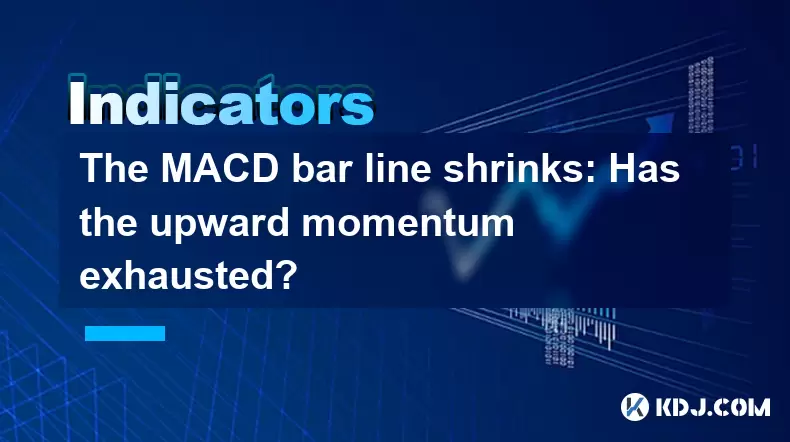
The MACD bar line shrinks: Has the upward momentum exhausted?
Jun 12,2025 at 12:49am
Understanding the MACD Bar LineThe Moving Average Convergence Divergence (MACD) is a widely used technical indicator in cryptocurrency trading. It consists of three main components: the MACD line, the signal line, and the MACD histogram (also known as the bar line). The MACD bar line represents the difference between the MACD line and the signal line. W...

Two Yangs and one Yin on the quarterly line: Long-term bullish signal confirmed?
Jun 12,2025 at 07:00am
Understanding the 'Two Yangs and One Yin' Candlestick PatternIn technical analysis, candlestick patterns play a pivotal role in identifying potential market reversals or continuations. The 'Two Yangs and One Yin' pattern is one such formation that traders often observe on longer timeframes like the quarterly chart. This pattern consists of two bullish (...

Large volume fell below the 60-day line: signal of medium-term trend turning bearish?
Jun 13,2025 at 03:42am
Understanding the 60-Day Moving Average in CryptocurrencyIn cryptocurrency trading, technical analysis plays a crucial role in predicting price movements. One of the most commonly used indicators is the 60-day moving average (MA), which smooths out price data over the last 60 days to provide traders with insights into the medium-term trend. When large v...

Is the gap pressure effective? Three major cases verify the breakthrough conditions
Jun 13,2025 at 04:35am
Understanding the Gap Pressure in Cryptocurrency TradingIn cryptocurrency trading, gap pressure refers to a technical analysis concept where price gaps form due to sudden market movements. These gaps often occur between the closing price of one trading session and the opening price of the next. Traders pay close attention to these gaps because they can ...

KDJ low-level golden cross: How to avoid false signals?
Jun 12,2025 at 08:21am
Understanding the KDJ IndicatorThe KDJ indicator, also known as the stochastic oscillator, is a momentum-based technical analysis tool widely used in cryptocurrency trading. It consists of three lines: the %K line (fast stochastic), the %D line (slow stochastic), and the %J line (divergence value). These lines oscillate between 0 and 100, helping trader...

Bottom-up volume stagnation: Is it accumulation or heavy selling pressure?
Jun 12,2025 at 01:42pm
What Is Bottom-Up Volume Stagnation?Bottom-up volume stagnation refers to a specific pattern observed in cryptocurrency trading charts where the price of an asset moves sideways or slightly downward, and trading volume remains consistently low over an extended period. This phenomenon is often seen after a sharp price drop or during a prolonged bear mark...

The MACD bar line shrinks: Has the upward momentum exhausted?
Jun 12,2025 at 12:49am
Understanding the MACD Bar LineThe Moving Average Convergence Divergence (MACD) is a widely used technical indicator in cryptocurrency trading. It consists of three main components: the MACD line, the signal line, and the MACD histogram (also known as the bar line). The MACD bar line represents the difference between the MACD line and the signal line. W...
See all articles

























































































